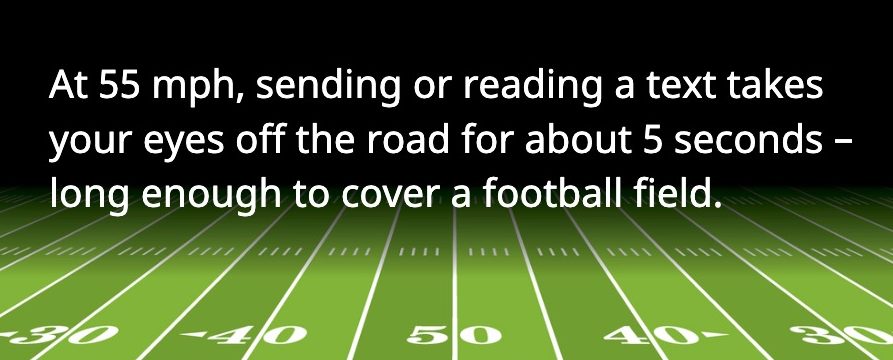DISTRACTED DRIVING
Each day in the United States, approximately nine people are killed and more than 1,000 are injured in crashes that are reported to involve a distracted driver.
Distracted driving is driving while doing another activity that takes your attention away from driving. Distracted driving greatly increases the chance of a motor vehicle crash.
Businesses that require employees to drive for work can include distracted driving points in their company policies and employee trainings. Some information to consider:
There are three main types of distraction:
- Visual: taking your eyes off the road.
- Manual: taking your hands off the wheel.
- Cognitive: taking your mind off driving.
Anything that takes your attention away from driving safely can be a distraction. Sending a text message, talking on a cellphone, using a navigation system, daydreaming, arguing with a passenger, eating while driving are just a few examples of distracted driving. Any of these distractions can endanger the driver and others.
Texting while driving is especially dangerous because it combines all three types of distraction.

How big is the problem?
Distractions take a motorist’s attention off driving, which can make a driver miss critical events, objects, and cues or abandon control of a vehicle, all potentially leading to a crash. Distracted drivers put not only themselves at risk, but everyone else using the road. According to the National Highway Traffic Safety Administration, one of every ten fatal crashes in the U.S. involves distraction, resulting in more than 3,000 deaths per year.
Who is most at risk?
Nationwide: young adult and teen drivers
- According to the National Highway Traffic Safety Administration, drivers under the age of 20 have the highest proportion of fatal crashes due to distracted driving. And the Centers for Disease Control found that nearly half of all U.S. high school students over the age of 16 text or email while they’re driving.
- The Youth Risk Behavior Surveillance System, of the federal Centers for Disease Control, monitors health-risk behaviors among high school students including texting or emailing while driving. Findings include that students who reported frequent texting while driving were:
- Less likely to wear a seat belt.
- More likely to ride with a driver who had been drinking.
- More likely to drink and drive.
What is being done here in Montana?
Most states have enacted universal laws banning at least some forms of cellphone use while driving; however, Montana has not. Although distracted driving is a significant cause of car crashes in Montana, the state has not passed a statewide ban on texting or talking on cellphones or using mobile devices.
However, several municipalities have passed local bans on cellphone use while driving; breaking the law in these cities can result in citations and fines. Billings, Bozeman, Columbia Falls, Hamilton, Great Falls and Whitefish all prohibit handheld cellphone use of any kind when you are behind the wheel. Helena also prohibits all handheld cellphone use – and its law extends to bicyclists. Missoula prohibits texting and driving – its law also applies to bicyclists. At the county level, Butte-Silver Bow and Anaconda-Deer Lodge banned handheld cellphone use while driving.
Drivers across Montana would be smart to pay attention and obey the specific local cellphone laws. However, the best way to protect yourself and others is to just never text or hold your phone while you’re behind the wheel.
Whether driving for work or pleasure, be safe: Put your phone away when taking road trips; using a cellphone while driving is an act of negligence that could result in liability for accident damages. Leave whatever fell on the vehicle floor on the floor. Do your daydreaming when you’re a passenger or outside the car. Keep your eyes focused on the road and traffic around you.
Multitasking won’t be worth it if you don’t arrive alive.
 Report an Injury
Report an Injury Get Coverage
Get Coverage Manage Policy
Manage Policy Pay Bill
Pay Bill
